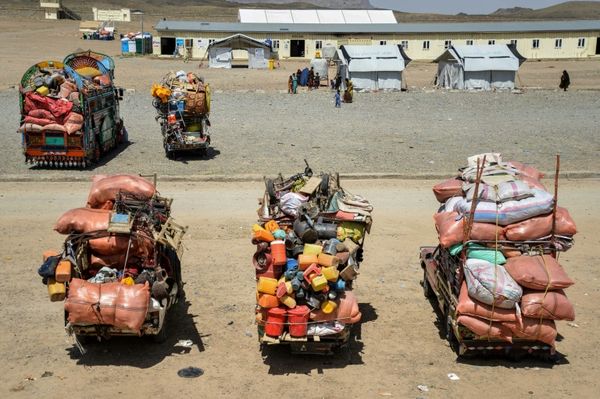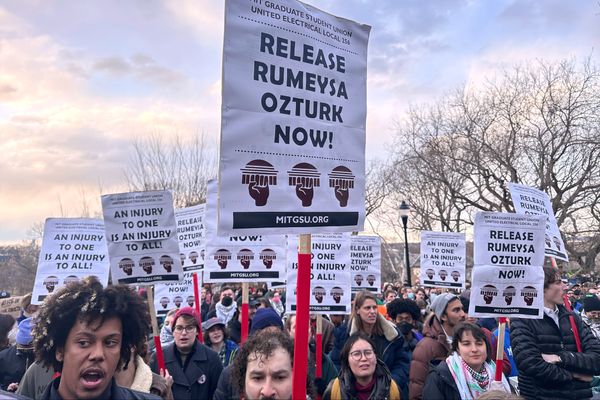Russia’s war in Ukraine has reached a sudden critical stage this week as talks begin between political leaders across the globe to decide on the future of the conflict.
The panicked peace talks have kicked off following US president Donald Trump’s decision to push for a deal with Russian counterpart Vladimir Putin to end the fighting in Ukraine.
Speaking before the weekend, the US leader, early into his once-removed second term, said he had a “great” phone call with Putin, leading to a "good possibility of ending that horrible, very bloody war."
Trump later told reporters that his administration “does not believe that Nato membership for Ukraine is a realistic outcome of a negotiated settlement,” adding that security for the country “must be backed by capable European and non-European troops.”

His comments took European leaders by surprise. Many are now faced with a decision whether to get behind Trump’s plan or continue with the approach they have carefully managed for nearly three years.
Prime minister Keir Starmer has wasted no time in backing the move, pledging for the first time to put “troops on the ground if necessary.” Writing in The Telegraph, he said Europe is facing a “once-in-a-generation moment for the collective security of our continent.”
His comments will likely be welcomed by Vladimir Zelensky, who said on Saturday that the continent should form an “army of Europe.” However, the Ukrainian president has expressed dissatisfaction at the possibility of being left in the dark as US and Russian officials discuss peace in his country.
The situation has culminated in several key talks set to take place in the same week. On Monday, European leaders gathered for ‘informal’ talks in Paris where tensions appeared to arise. On Tuesday, a US delegation meets with Russian officials in Saudi Arabia to go over terms of the possible peace deal.
Here are all the key events, explained:
US meets Russia in Saudi Arabia
A US delegation led by secretary of state Marco Rubio is in Saudi Arabia for talks with Russian officials on Tuesday. Joining him are Middle East special envoy Steve Witkoff and national security adviser Mike Waltz.
They are meeting Russian foreign minister Sergey Lavrov and foreign affairs adviser Yuri Ushakov. Spokesperson Dmitry Peskov said they will focus on “restoring the entire complex of U.S.-Russian relations, as well as preparing possible talks on the Ukrainian settlement and organizing a meeting of the two presidents.”
The event marks a major reversal of the Biden-era US policy to isolate Russia. As both sides indicate, they could pave the way for a meeting between Trump and Putin. The pair last met in Helsinki in 2018 during Trump’s first presidential term.
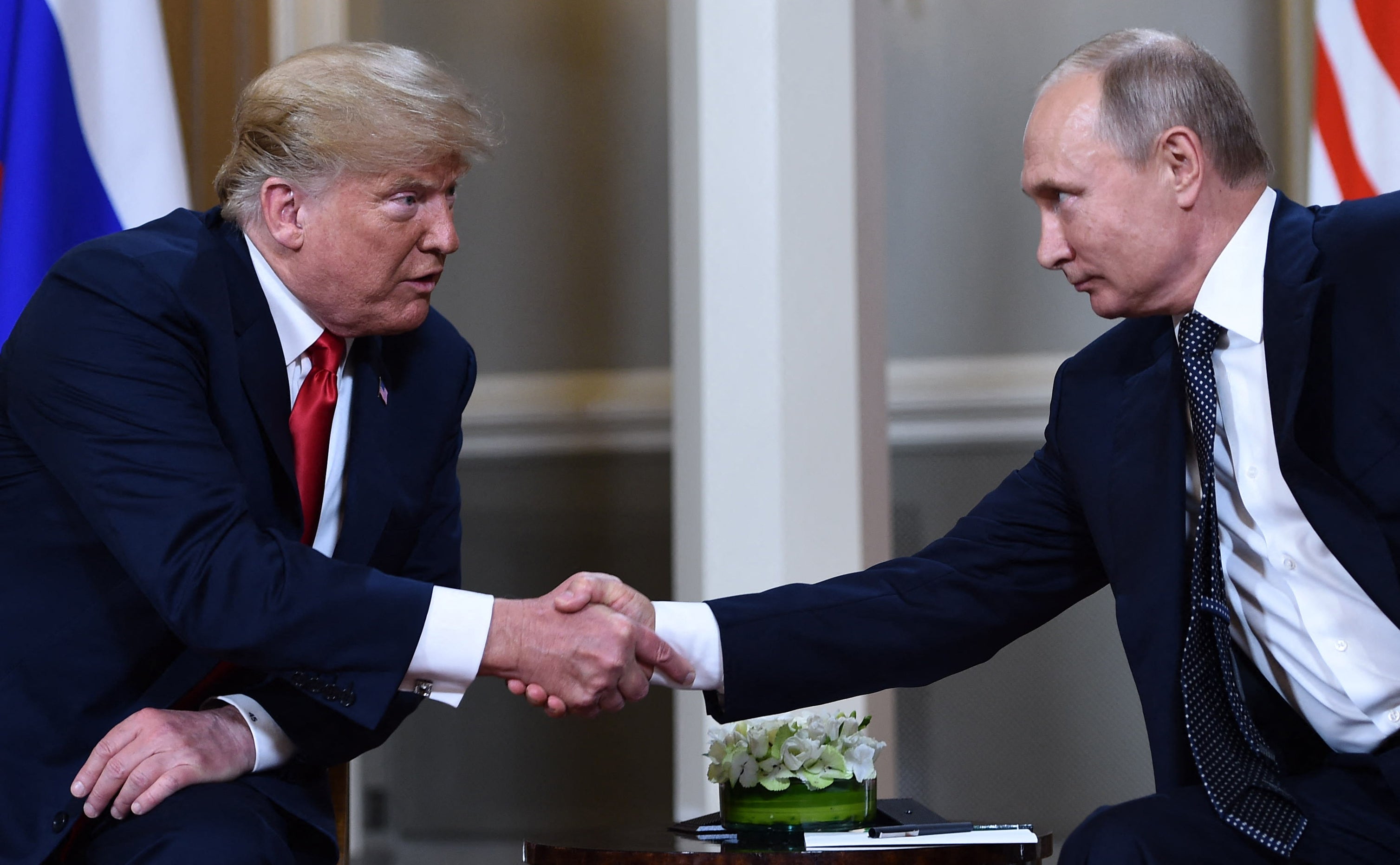
Details of the deal that the two presidents could strike have yet to be published, but the US has indicated how it will approach the talks. Speaking to reporters last week, US defence secretary Pete Hegseth said firstly that Europe must provide an “overwhelming” proportion of the funding for Ukraine.
Since Russia’s invasion, the US has been Ukraine’s largest military and financial backer and spends 3.4 per cent of its GDP on defence. Hegseth says the country will no longer “tolerate an imbalanced relationship” with Europe in supporting Ukraine.
He went on to tell reporters returning Ukraine to its pre-2014 borders and that Nato membership for the country are both “unrealistic” goals. Mr Hegseth added that any European troops deployed as part of peacekeeping operations must should be there on a non-Nato mission, which would not trigger the alliance’s mutual defence clause.
President Trump has also said that Ukraine has “essentially agreed” to to give the US $500bn worth of rare earth minerals to pay for financial and military support.
Why Saudi Arabia?
Saudi officials have indicated that they will not be a passive host at the talks in Riyadh, but act to mediate between the two delegations. Their team will be led by the country’s national security adviser.
The country’s 39-year-old effective leader Crown Prince Mohammed bin Salman has a strong relationship with both Putin and Trump, putting him – and Saudi Arabia – in a unique position.
The country has risen in prominence and wealth since the 1973 oil crisis, which saw the price of oil rise dramatically. Since assuming the role of prime minister from his father in 2022, bin Salman has moved to implement social and legal reforms in the country, and improve its standing as a global player on the world stage.
In 2023, the country hosted a two-day peace summit on Ukraine with representatives from over 40 countries in attendance, alongside pledging $400 million in aid to the country. This was likely in part to legitimise the country’s image as a global peacemaker, as bin Salman looks to attract investment from other countries.
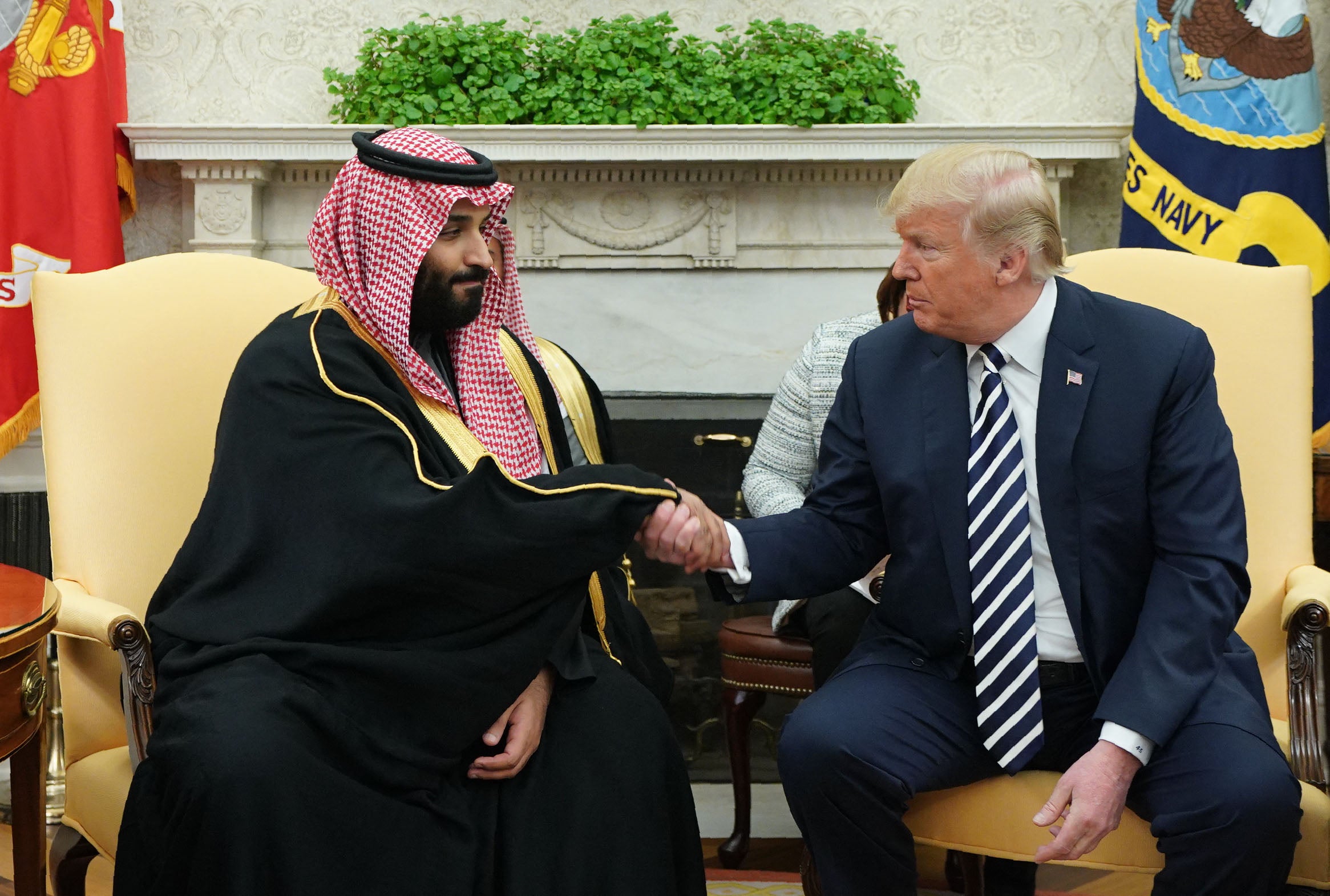
Hosting these key talks will then be seen as a great success for the administration. However, Saudi Arabia’s administration has come under intense criticism in recent years for its record on human rights, including executions and censorship.
In October 2018, US-based Saudi journalist Jamal Khashoggi was assassinated in the Saudi consulate in Istanbul. The CIA later concluded that bin Salman had ordered in murder.
But President Trump – then in his first term – rejected the agency’s assessment. Responding to their findings, he said: "it could very well be that the Crown Prince had knowledge of this tragic event, maybe he did and maybe he didn't" adding that "in any case, our relationship is with the Kingdom of Saudi Arabia."
Russia’s President Putin likewise stood by bin Salman after Khashoggi’s murder, maintaining a good relationship with the prince and his country. A few years later, the Saudi premier would resist pressure from the West to isolate Russia after the country’s invasion of Ukraine.
Ukraine may be left out of talks
Despite the high-stakes discussions being his country’s future, Ukraine’s President Zelensky has not been included in the US-Russia meeting. He has warned that his administration should not be left out of any peace talks, and says they may not respect any decisions made without the nation’s agreement.
Responding to criticism, Trump has said Zelensky “will be involved,” but speaking to reporters in a virtual briefing from the United Arab Emirates where he is on a state visit, the Ukrainian president said he “did not know anything about it.”
“Ukraine regards any negotiations on Ukraine without Ukraine as ones that have no result, and we cannot recognise ... any agreements about us without us,” he added.
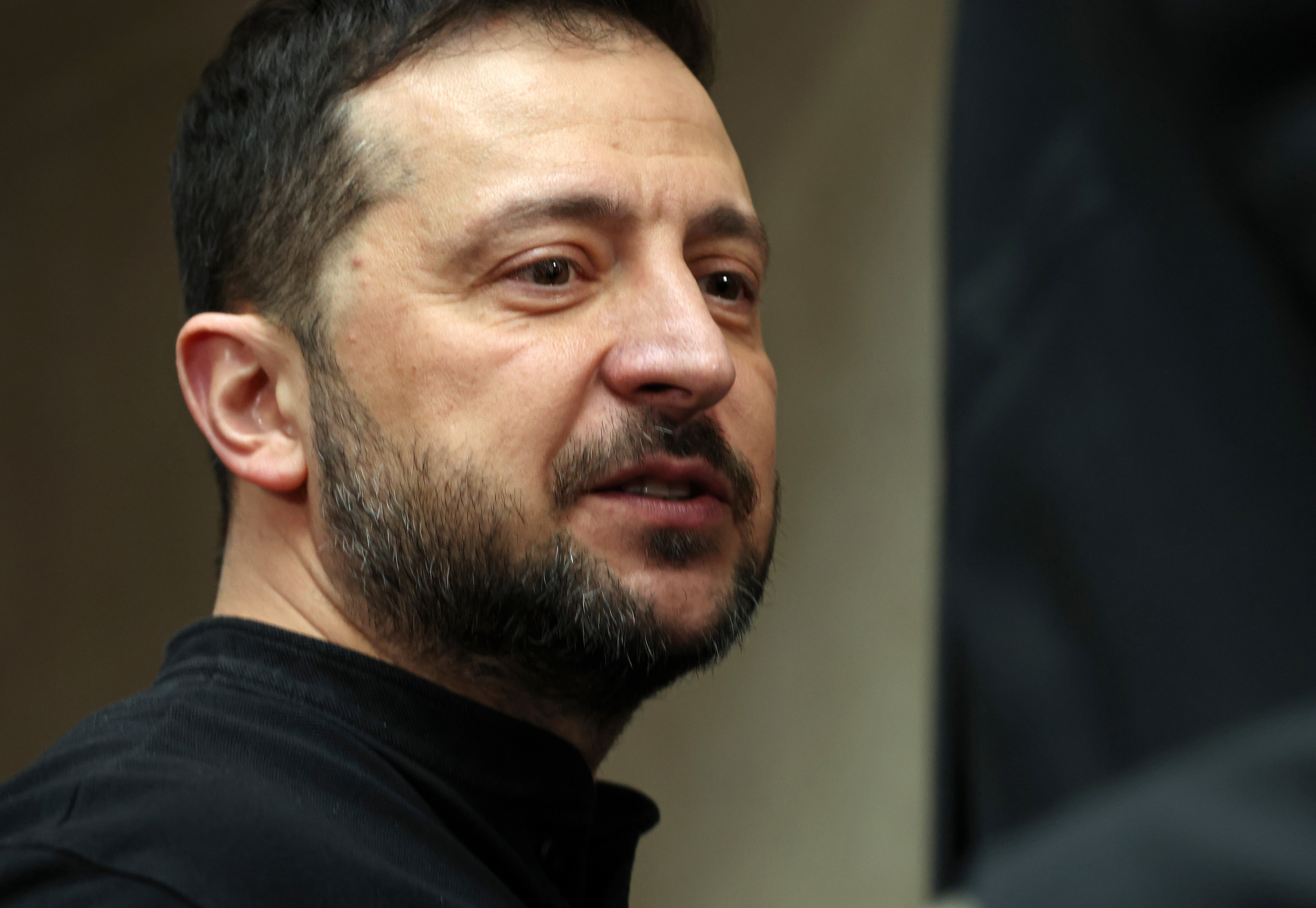
Back in October, Zelensky laid out his ‘victory plan’ to Ukrainian parliament. This included full Nato membership, removing the ban on long-range missiles provided by Western allies in Russian territory, and joint US-EU protection of critical natural resources.
However, last week the Ukrainian president said he was open to the idea of ‘swapping’ territory with Russia. Speaking to The Guardian, he said if he were to engage in US-Russia talks, his country could exchange land Kyiv has held in Russia’s Kursk region for a currently unknown area. Russia quickly shot down the offer.
European leaders gather in Paris
France hosted a last-minute meeting with Nato secretary general Mark Rutte on Monday. Joining was Sir Keir, French president Emmanuel Macron, as well as leaders of Germany, Italy, Poland, Spain, the Netherlands and Denmark.
The presidents of the European Council and European Commission were also in attendance, according to the Elysée Palace, at what Macron has called an “informal meeting.”
But Sir Keir placed more ceremony on to the summit, calling it a “once-in-a-generation moment for our national security where we engage with the reality of the world today and the threat we face from Russia.”
“It’s clear Europe must take on a greater role in Nato as we work with the United States to secure Ukraine’s future and face down the threat we face from Russia,” he added.
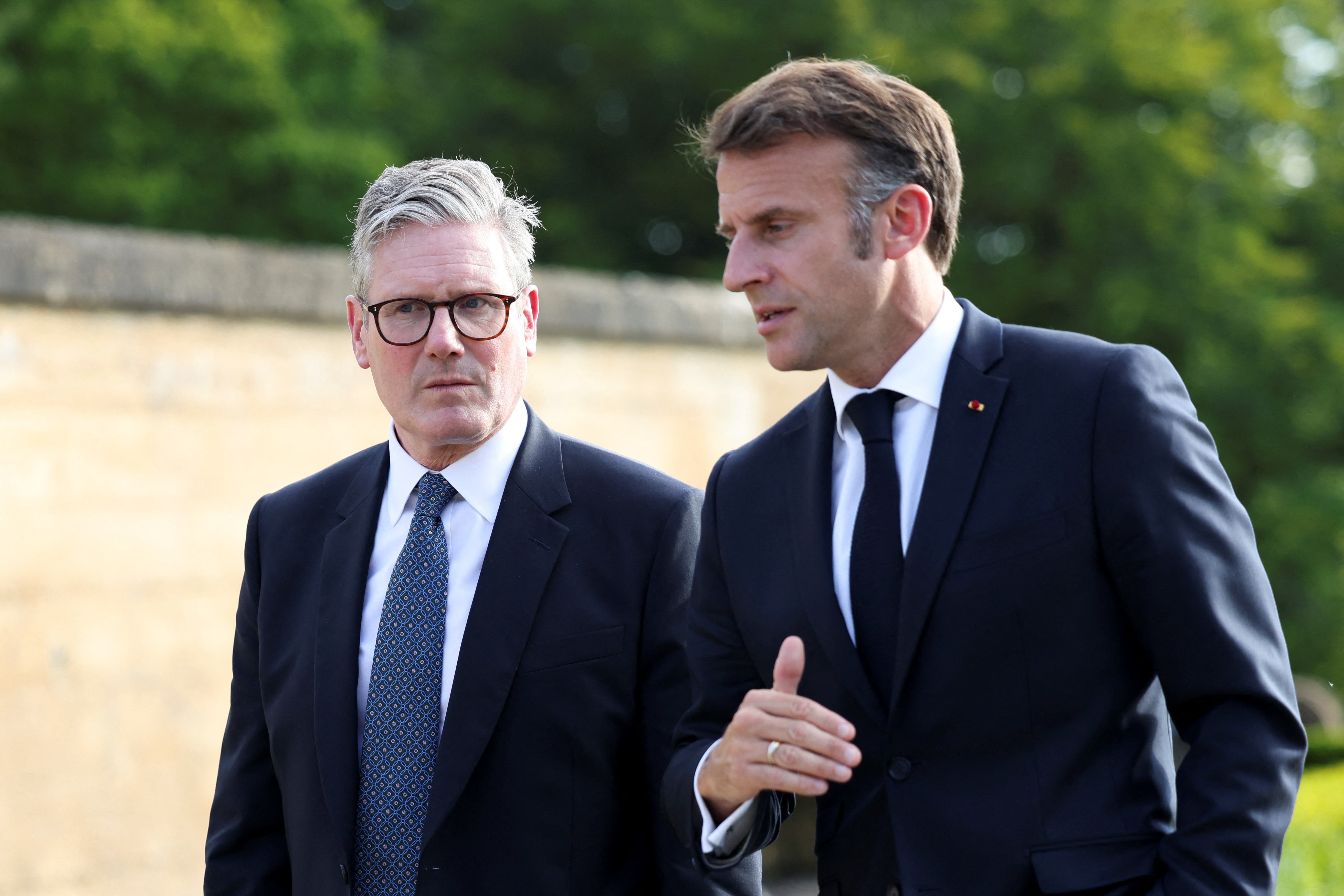
Following the event, it is understood that the British PM invited European leaders for further talks in the UK, with hopes to act as a ‘bridge’ between the EU and US. He said any deal must see the US provide a “backstop” to prevent further Russian aggression.
But not all leaders are on the same page. Polish prime minister Donald Tusk said before and after the meeting that he would not send any of the country’s troops to Ukraine. He added the country will continue to provide “humanitarian and military aid” as it has been.
This is likely to be a central division as leaders deliberate how to support Ukraine going forward. And while most have indicated a support for boosted defence spending, as called for by President Trump, getting close to his five per cent demand remains unrealistic for many nations.
To make matters more complicated, most major EU-wide decisions must be agreed upon by all 27 nations that form the bloc. This includes Hungary, led by president Viktor Orbán, a staunch Putin ally who has used his power to veto decisions on more than one occasion.
The next week will prove critical in the future of Ukraine as leaders discuss how to approach the prospect of peace in the region. Keen not to give up key bargaining chips, European leaders may well find themselves at odds with Trump once again over issues like Nato membership and defence spending.
Meanwhile, Ukrainian officials will be looking to push themselves into a central role over the future of their country, complicating any deal that Trump’s team may strike in the near future.

